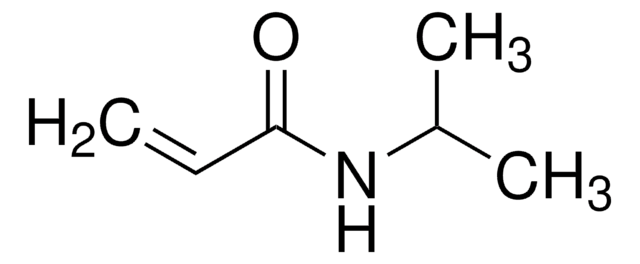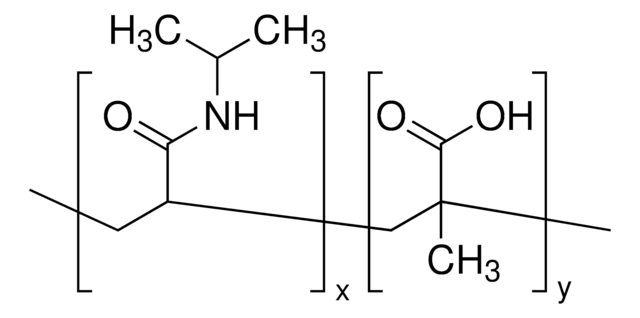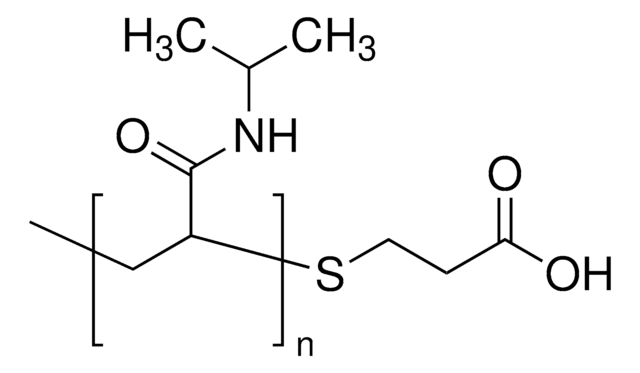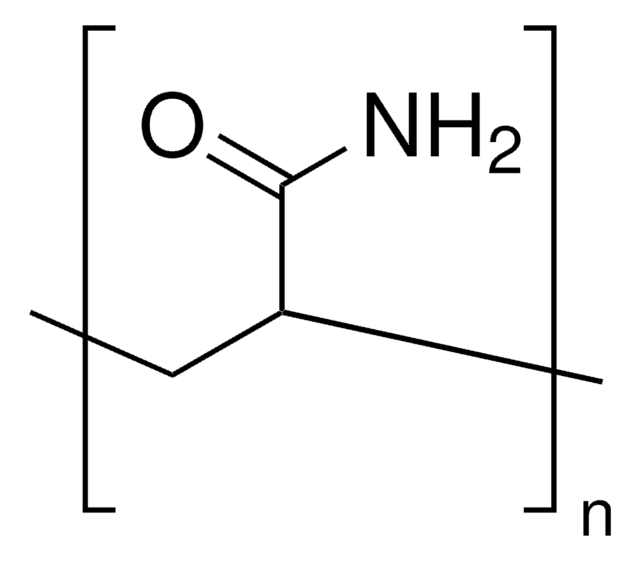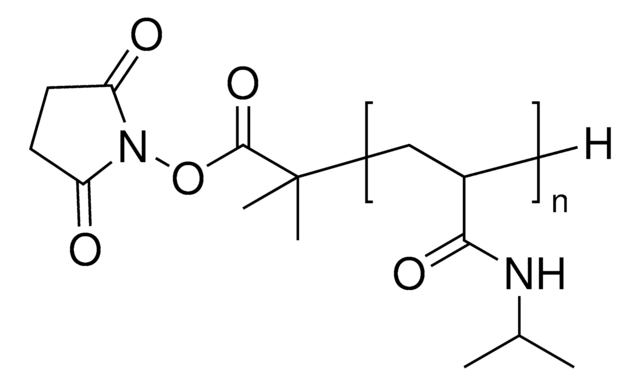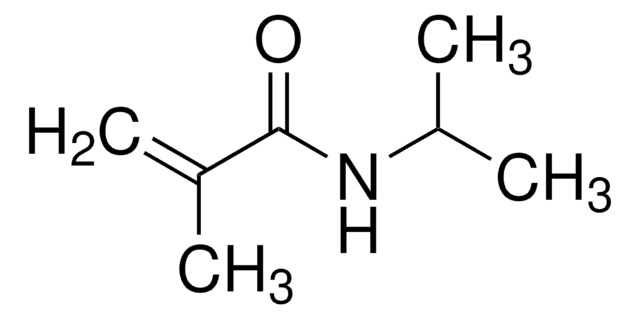Kluczowe dokumenty
535311
Poly(N-isopropylacrylamide)
Mn ~40,000
Synonim(y):
NIPAM polymer, PNIPAM, Polyacrylamide, polyNIPAM
About This Item
Polecane produkty
masa cząsteczkowa
Mn 20,000-60,000
Mn ~40,000
Poziom jakości
mp
96 °C
ciąg SMILES
CC(C)NC(=O)C=C
InChI
1S/C6H11NO/c1-3-5-7-6(8)4-2/h4H,2-3,5H2,1H3,(H,7,8)
Klucz InChI
WDFKEEALECCKTJ-UHFFFAOYSA-N
Szukasz podobnych produktów? Odwiedź Przewodnik dotyczący porównywania produktów
Zastosowanie
Postać fizyczna
Kod klasy składowania
11 - Combustible Solids
Klasa zagrożenia wodnego (WGK)
WGK 1
Temperatura zapłonu (°F)
Not applicable
Temperatura zapłonu (°C)
Not applicable
Środki ochrony indywidualnej
Eyeshields, Gloves, type N95 (US)
Wybierz jedną z najnowszych wersji:
Masz już ten produkt?
Dokumenty związane z niedawno zakupionymi produktami zostały zamieszczone w Bibliotece dokumentów.
Klienci oglądali również te produkty
Produkty
Universal Platform for Surface Modification Employing Grafted Polymer Layers
Poly(N-isopropylacrylamide), or PNIPAM, is a stimuli-responsive polymer that responds to changes in pH and temperature and has a LCST around 32 C.
Inżynieria tkankowa stała się kluczowym narzędziem terapeutycznym w leczeniu uszkodzonych lub chorych narządów i tkanek, takich jak naczynia krwionośne i pęcherze moczowe.
Tissue engineering has become a key therapeutic tool in the treatment of damaged or diseased organs and tissues, such as blood vessels and urinary bladders.
Nasz zespół naukowców ma doświadczenie we wszystkich obszarach badań, w tym w naukach przyrodniczych, materiałoznawstwie, syntezie chemicznej, chromatografii, analityce i wielu innych dziedzinach.
Skontaktuj się z zespołem ds. pomocy technicznej